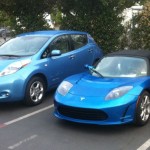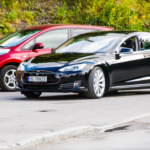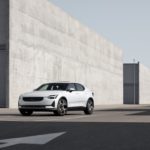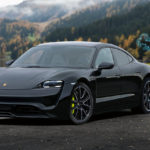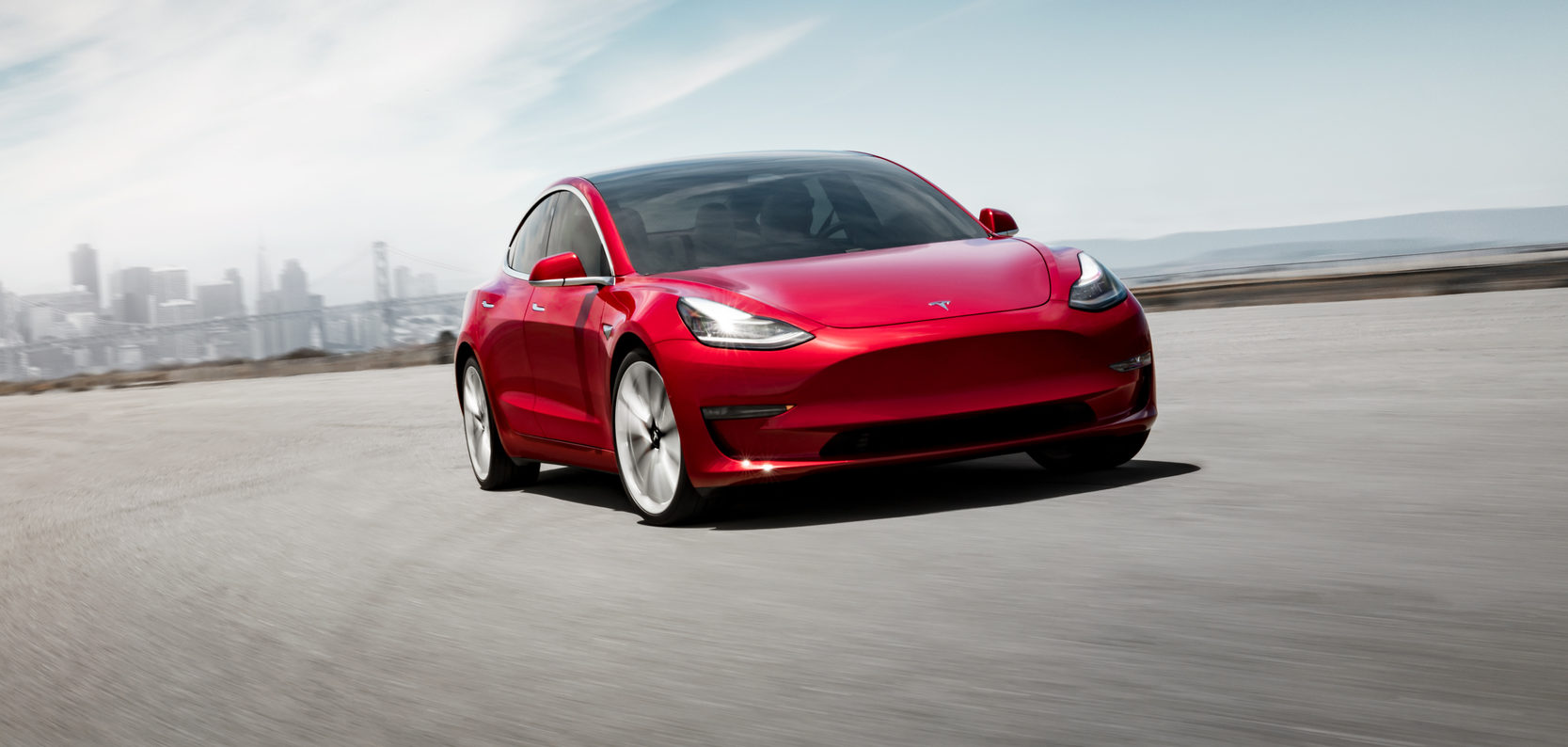
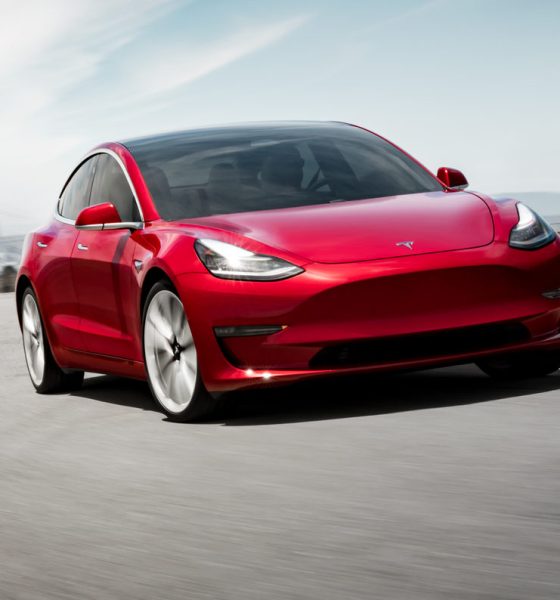
News
Tesla is ending the era of half-hearted, compliance electric cars
Carried forward by the momentum of electric vehicles like the Tesla Model 3, upcoming EVs from experienced carmakers such as Porsche and Volvo are showing a trend in the auto industry — from this point on, the automotive market will be fought with electric cars, and there will be no turning back.
It might be difficult to imagine today considering the success of the Model 3 and the influx of electric vehicles from veteran carmakers, but there was once a time when EVs were mostly half-hearted attempts whose primary purpose was to meet the mandates set by the California Air Resource Board (CARB). The EVs produced during this period even earned a very appropriate moniker — compliance cars. Among these were the Ford Focus EV, GM’s Spark EV, the Fiat 500e, the RAV4 EV, and the Honda Fit EV, all of which were adequate vehicles, but are costly and compromised in range and cargo compared to their gas-powered counterparts.
During the height of the compliance car era, some companies opted to pursue a different path. Among these is Nissan, whose all-electric vehicle, the Leaf, was sold across the United States. The Leaf would go on to be one of the best-selling EVs in the market. Tesla also saw a lot of growth in but a few years, bringing to market the Model X SUV and the Model 3 midsize sedan. Just like the Leaf, Tesla’s electric cars sold well, finding a strong following among consumers for who prefer the company’s no-compromises approach when it comes to the safety, performance, tech, and features of its vehicles. Tesla’s momentum never really stopped, as seen in the earlier-than-expected launch of the $35,000 Standard Model 3 recently.
It could be said that Elon Musk’s tenacity and his stubborn refusal to give up when faced with large challenges is a reason behind Tesla’s success. With Tesla all but proving that there is a demand for well-designed electric vehicles, other carmakers followed suit. In 2018 alone, several electric cars from established manufacturers were released, headlined by the Jaguar I-PACE, the Audi e-tron SUV, and the Mercedes-Benz EQC. Unlike compliance cars of years past, these vehicles were hyped as essential entries into their respective companies’ shift towards electric mobility. Nevertheless, some of these vehicles, such as the EQC, still carried over much of its gas-powered siblings’ characteristics, such as a front trunk full of components.
More recent electric vehicles from experienced carmakers seem to be better-designed. The Polestar 2 from Volvo, for one, proved impressive during its launch. With its dual motors that produce 408 hp, its deep integration of Google’s Android software, and a starting price of $45,000, the Polestar 2 can serve as an alternative for buyers who do not wish to purchase a Model 3. The Porsche Taycan, which is expected to be unveiled later this year, was also carefully designed from the ground-up as a high-performance electric car. Porsche has fully committed to electrification, with the company retiring its diesel lineup in favor of greener options. In the same way that the Polestar 2 can be an alternative to the Model 3, the Taycan can also be the perfect vehicle for buyers who wish to purchase a large sedan that is not a Tesla Model S.
- Porsche Taycan rendering via TaycanForum.com
The Polestar 2 and the Porsche Taycan. (Photo: Polestar, TaycanForum.com)
If there is anything more that experienced automakers can do, it is to produce their premium electric vehicles in large quantities. Porsche, despite being a low-volume carmaker, is adopting this strategy, with the Taycan’s initial 20,000 a year output being changed to 40,000 per year. Volvo is planning to produce a decent number of Polestar 2 every year as well, with the company planning on an output “north of” 50,000 units per year. This is something highlighted by Elon Musk in a tweet earlier this year, when he noted that Tesla’s competition is “not the small trickle of non-Tesla electric cars being produced, but rather the enormous flood of gasoline cars pouring out of the world’s factories every day.”
Elon Musk will be the first person to remind anyone that Tesla’s primary goal has always been to accelerate the advent of sustainable transport. Considering the influx of electric vehicles from veteran carmakers, as well as seemingly solid entries from younger companies like Rivian, it appears that finally, after years of swimming against the current, the auto industry is finally getting on board with Tesla’s mission. For Elon Musk, at least, it appears that his Master Plan, which outlines his vision for sustainable transportation, is coming together.

News
Tesla FSD fleet is nearing 7 billion total miles, including 2.5 billion city miles
As can be seen on Tesla’s official FSD webpage, vehicles equipped with the system have now navigated over 6.99 billion miles.

Tesla’s Full Self-Driving (Supervised) fleet is closing in on almost 7 billion total miles driven, as per data posted by the company on its official FSD webpage.
These figures hint at the massive scale of data fueling Tesla’s rapid FSD improvements, which have been quite notable as of late.
FSD mileage milestones
As can be seen on Tesla’s official FSD webpage, vehicles equipped with the system have now navigated over 6.99 billion miles. Tesla owner and avid FSD tester Whole Mars Catalog also shared a screenshot indicating that from the nearly 7 billion miles traveled by the FSD fleet, more than 2.5 billion miles were driven inside cities.
City miles are particularly valuable for complex urban scenarios like unprotected turns, pedestrian interactions, and traffic lights. This is also the difference-maker for FSD, as only complex solutions, such as Waymo’s self-driving taxis, operate similarly on inner-city streets. And even then, incidents such as the San Francisco blackouts have proven challenging for sensor-rich vehicles like Waymos.
Tesla’s data edge
Tesla has a number of advantages in the autonomous vehicle sector, one of which is the size of its fleet and the number of vehicles training FSD on real-world roads. Tesla’s nearly 7 billion FSD miles then allow the company to roll out updates that make its vehicles behave like they are being driven by experienced drivers, even if they are operating on their own.
So notable are Tesla’s improvements to FSD that NVIDIA Director of Robotics Jim Fan, after experiencing FSD v14, noted that the system is the first AI that passes what he described as a “Physical Turing Test.”
“Despite knowing exactly how robot learning works, I still find it magical watching the steering wheel turn by itself. First it feels surreal, next it becomes routine. Then, like the smartphone, taking it away actively hurts. This is how humanity gets rewired and glued to god-like technologies,” Fan wrote in a post on X.
News
Tesla starts showing how FSD will change lives in Europe
Local officials tested the system on narrow country roads and were impressed by FSD’s smooth, human-like driving, with some calling the service a game-changer for everyday life in areas that are far from urban centers.

Tesla has launched Europe’s first public shuttle service using Full Self-Driving (Supervised) in the rural Eifelkreis Bitburg-Prüm region of Germany, demonstrating how the technology can restore independence and mobility for people who struggle with limited transport options.
Local officials tested the system on narrow country roads and were impressed by FSD’s smooth, human-like driving, with some calling the service a game-changer for everyday life in areas that are far from urban centers.
Officials see real impact on rural residents
Arzfeld Mayor Johannes Kuhl and District Administrator Andreas Kruppert personally tested the Tesla shuttle service. This allowed them to see just how well FSD navigated winding lanes and rural roads confidently. Kruppert said, “Autonomous driving sounds like science fiction to many, but we simply see here that it works totally well in rural regions too.” Kuhl, for his part, also noted that FSD “feels like a very experienced driver.”
The pilot complements the area’s “Citizen Bus” program, which provides on-demand rides for elderly residents who can no longer drive themselves. Tesla Europe shared a video of a demonstration of the service, highlighting how FSD gives people their freedom back, even in places where public transport is not as prevalent.
What the Ministry for Economic Affairs and Transport says
Rhineland-Palatinate’s Minister Daniela Schmitt supported the project, praising the collaboration that made this “first of its kind in Europe” possible. As per the ministry, the rural rollout for the service shows FSD’s potential beyond major cities, and it delivers tangible benefits like grocery runs, doctor visits, and social connections for isolated residents.
“Reliable and flexible mobility is especially vital in rural areas. With the launch of a shuttle service using self-driving vehicles (FSD supervised) by Tesla in the Eifelkreis Bitburg-Prüm, an innovative pilot project is now getting underway that complements local community bus services. It is the first project of its kind in Europe.
“The result is a real gain for rural mobility: greater accessibility, more flexibility and tangible benefits for everyday life. A strong signal for innovation, cooperation and future-oriented mobility beyond urban centers,” the ministry wrote in a LinkedIn post.
News
Tesla China quietly posts Robotaxi-related job listing
Tesla China is currently seeking a Low Voltage Electrical Engineer to work on circuit board design for the company’s autonomous vehicles.

Tesla has posted a new job listing in Shanghai explicitly tied to its Robotaxi program, fueling speculation that the company is preparing to launch its dedicated autonomous ride-hailing service in China.
As noted in the listing, Tesla China is currently seeking a Low Voltage Electrical Engineer to work on circuit board design for the company’s autonomous vehicles.
Robotaxi-specific role
The listing, which was shared on social media platform X by industry watcher @tslaming, suggested that Tesla China is looking to fill the role urgently. The job listing itself specifically mentions that the person hired for the role will be working on the Low Voltage Hardware team, which would design the circuit boards that would serve as the nervous system of the Robotaxi.
Key tasks for the role, as indicated in the job listing, include collaboration with PCB layout, firmware, mechanical, program management, and validation teams, among other responsibilities. The role is based in Shanghai.
China Robotaxi launch
China represents a massive potential market for robotaxis, with its dense urban centers and supportive policies in select cities. Tesla has limited permission to roll out FSD in the country, though despite this, its vehicles have been hailed as among the best in the market when it comes to autonomous features. So far, at least, it appears that China supports Tesla’s FSD and Robotaxi rollout.
This was hinted at in November, when Tesla brought the Cybercab to the 8th China International Import Expo (CIIE) in Shanghai, marking the first time that the autonomous two-seater was brought to the Asia-Pacific region. The vehicle, despite not having a release date in China, received a significant amount of interest among the event’s attendees.
